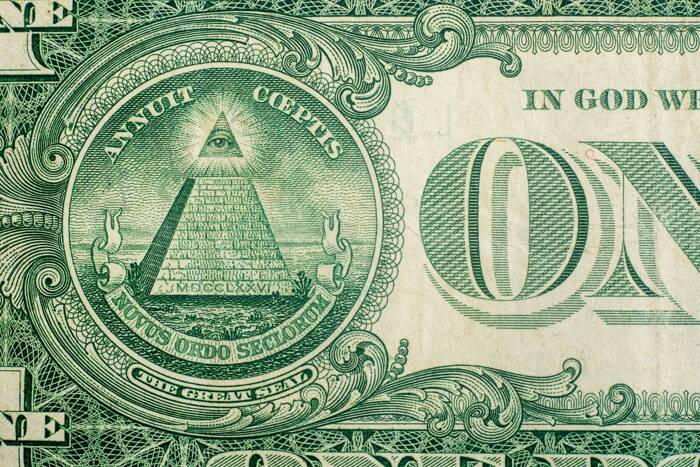Category: Forex News, News
Pound Sterling looks fragile after disappointing UK data
- GBP/USD stays in negative territory near 1.3300 on Wednesday.
- The data from the UK showed a contraction in the private sector’s business activity in April.
- Markets await US PMI data and comments from central bankers.
GBP/USD dropped below 1.3250 in the Asian session on Wednesday after posting daily losses on Tuesday. Although the pair staged a rebound afterward, disappointing Purchasing Managers Index (PMI) data from the UK limited the upside.
British Pound PRICE This week
The table below shows the percentage change of British Pound (GBP) against listed major currencies this week. British Pound was the weakest against the New Zealand Dollar.
| USD | EUR | GBP | JPY | CAD | AUD | NZD | CHF | |
|---|---|---|---|---|---|---|---|---|
| USD | -0.11% | -0.11% | -0.16% | -0.26% | -0.46% | -1.01% | 0.85% | |
| EUR | 0.11% | -0.14% | -0.06% | -0.19% | -0.52% | -0.92% | 0.95% | |
| GBP | 0.11% | 0.14% | 0.25% | -0.03% | -0.40% | -0.78% | 1.10% | |
| JPY | 0.16% | 0.06% | -0.25% | -0.11% | -0.41% | -0.71% | 1.04% | |
| CAD | 0.26% | 0.19% | 0.03% | 0.11% | -0.30% | -0.73% | 1.14% | |
| AUD | 0.46% | 0.52% | 0.40% | 0.41% | 0.30% | -0.38% | 1.50% | |
| NZD | 1.01% | 0.92% | 0.78% | 0.71% | 0.73% | 0.38% | 1.92% | |
| CHF | -0.85% | -0.95% | -1.10% | -1.04% | -1.14% | -1.50% | -1.92% |
The heat map shows percentage changes of major currencies against each other. The base currency is picked from the left column, while the quote currency is picked from the top row. For example, if you pick the British Pound from the left column and move along the horizontal line to the US Dollar, the percentage change displayed in the box will represent GBP (base)/USD (quote).
S&P Global/CIPS Composite PMI in the UK slumped to 48.2 in April’s flash estimate from 51.5 in March, highlighting a contraction in the private sector’s business activity.
Commenting on the survey’s findings, “while recent months have been characterised by UK businesses treading water, broadly stagnating since last autumn’s Budget, businesses are reporting more of a struggle to keep their heads above water in April,” Chris Williamson, Chief Business Economist at S&P Global Market Intelligence, said.
“The collapse in confidence and drop in output during April raise red flags as to the near-term economic outlook and add pressure on the Bank of England to reduce interest rates again at its May meeting,” Williamson added.
S&P Global will publish preliminary April Manufacturing and Services PMI data for the US later in the day.
In case either of the headline PMIs come in well below 50, the USD could have a difficult time finding demand. In this scenario, GBP/USD could stretch higher with the immediate reaction. On the flip side, a positive surprise in the PMI report could boost the USD and cause the pair to turn south. Investors will also scrutinize the commentary in the report to see whether business activity is being impacted negatively by tariffs. If the publication points to a significant deterioration in the private sector’s business outlook, the USD could continue to weaken against its peers.
GBP/USD Technical Analysis
GBP/USD broke below the ascending regression channel and closed the last four 4-hour candles below the 20-period Simple Moving Average (SMA), reflecting a lack of buyer interest. On the downside, immediate support is located at 1.3260 (static level, 50-period SMA) before 1.3200 and 1.3090 (100-period SMA).
Looking north, resistances could be spotted at 1.3340 (20-period SMA, static level), 1.3400-1.3410 (round level, static level) and 1.3460 (static level).
Pound Sterling FAQs
The Pound Sterling (GBP) is the oldest currency in the world (886 AD) and the official currency of the United Kingdom. It is the fourth most traded unit for foreign exchange (FX) in the world, accounting for 12% of all transactions, averaging $630 billion a day, according to 2022 data.
Its key trading pairs are GBP/USD, also known as ‘Cable’, which accounts for 11% of FX, GBP/JPY, or the ‘Dragon’ as it is known by traders (3%), and EUR/GBP (2%). The Pound Sterling is issued by the Bank of England (BoE).
The single most important factor influencing the value of the Pound Sterling is monetary policy decided by the Bank of England. The BoE bases its decisions on whether it has achieved its primary goal of “price stability” – a steady inflation rate of around 2%. Its primary tool for achieving this is the adjustment of interest rates.
When inflation is too high, the BoE will try to rein it in by raising interest rates, making it more expensive for people and businesses to access credit. This is generally positive for GBP, as higher interest rates make the UK a more attractive place for global investors to park their money.
When inflation falls too low it is a sign economic growth is slowing. In this scenario, the BoE will consider lowering interest rates to cheapen credit so businesses will borrow more to invest in growth-generating projects.
Data releases gauge the health of the economy and can impact the value of the Pound Sterling. Indicators such as GDP, Manufacturing and Services PMIs, and employment can all influence the direction of the GBP.
A strong economy is good for Sterling. Not only does it attract more foreign investment but it may encourage the BoE to put up interest rates, which will directly strengthen GBP. Otherwise, if economic data is weak, the Pound Sterling is likely to fall.
Another significant data release for the Pound Sterling is the Trade Balance. This indicator measures the difference between what a country earns from its exports and what it spends on imports over a given period.
If a country produces highly sought-after exports, its currency will benefit purely from the extra demand created from foreign buyers seeking to purchase these goods. Therefore, a positive net Trade Balance strengthens a currency and vice versa for a negative balance.
Written by : Editorial team of BIPNs
Main team of content of bipns.com. Any type of content should be approved by us.
Share this article:









